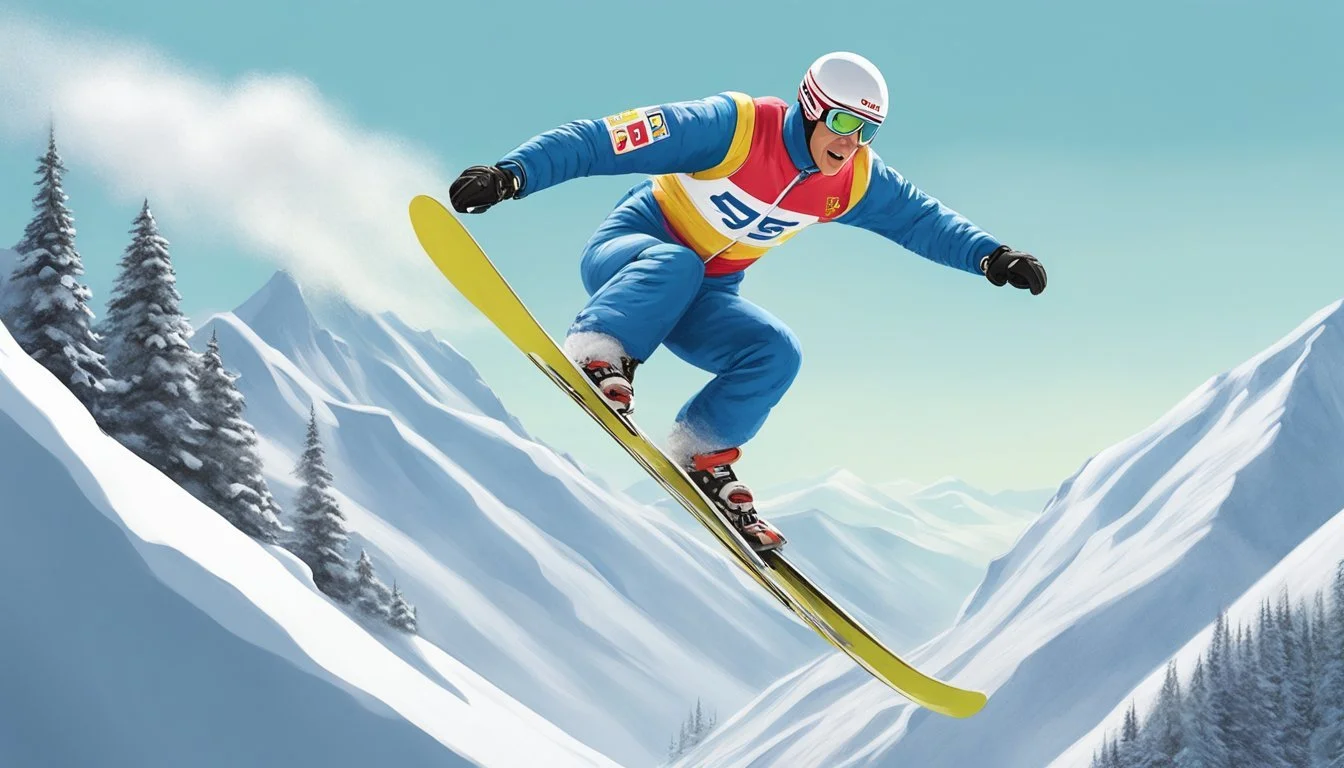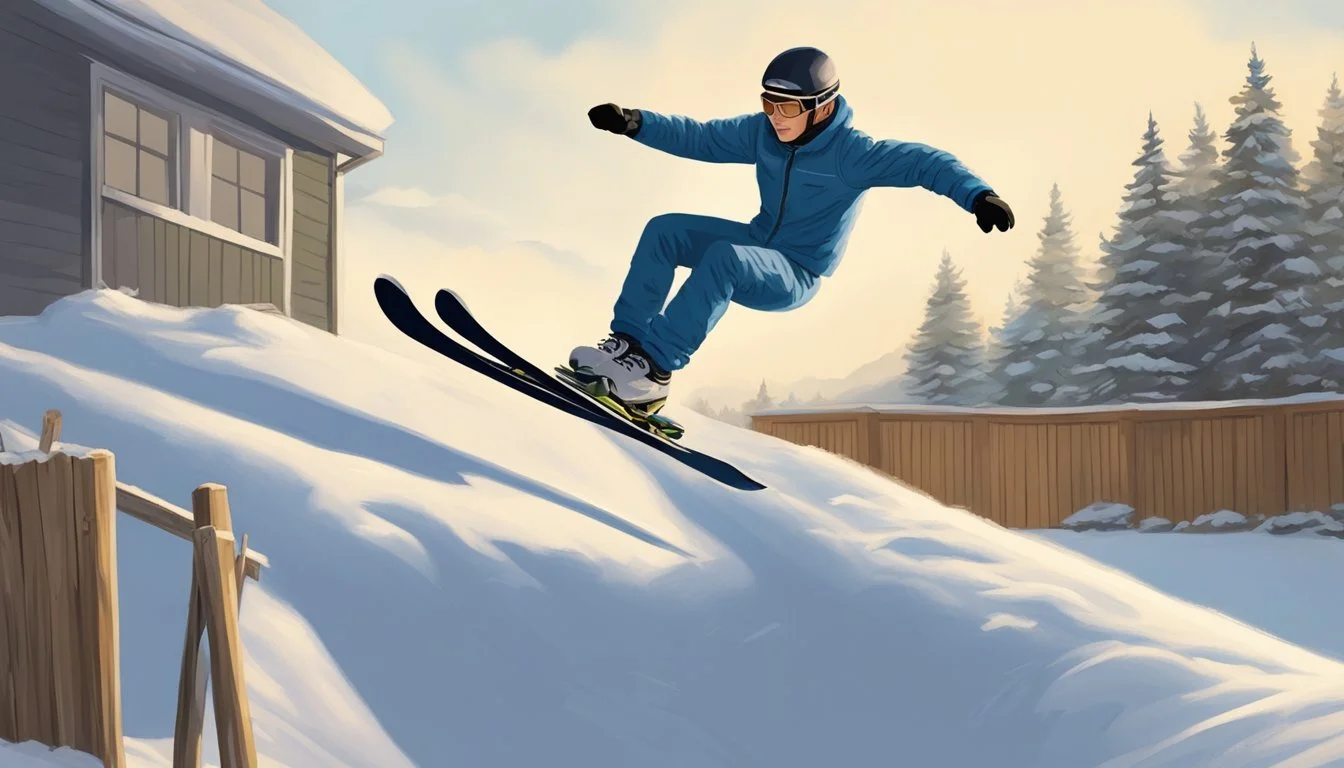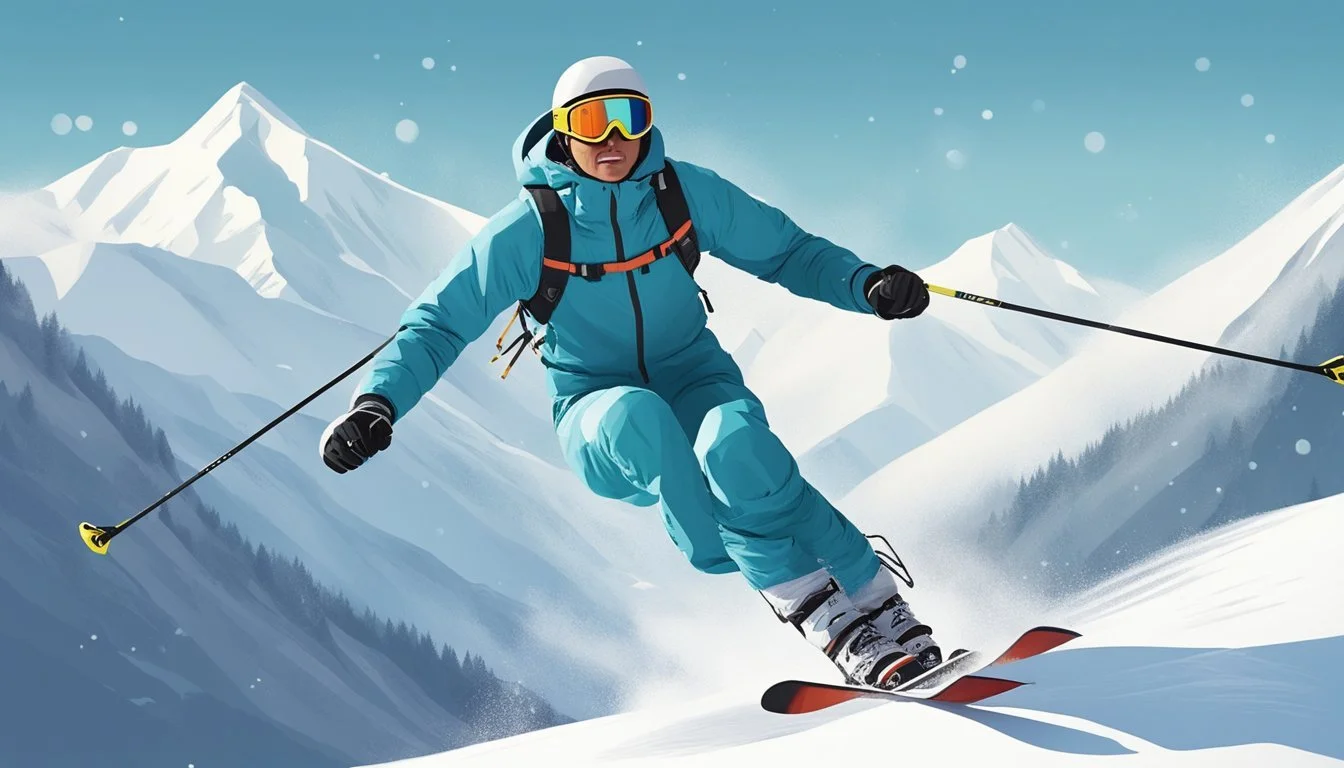Soaring Against Odds: The Real Eddie 'The Eagle' Edwards
An Unlikely Ski Jumping Legend
Michael "Eddie" Edwards captured the world's imagination at the 1988 Winter Olympics in Calgary. Despite finishing last in both his ski jumping events, Eddie became an international sensation and earned the nickname "Eddie the Eagle" for his unwavering determination and positive attitude.
Eddie's journey from plasterer to Olympic ski jumper exemplifies the power of perseverance and the pursuit of seemingly impossible dreams. Born in Cheltenham, England, Eddie had no natural athletic talent and struggled with poor eyesight. Yet he refused to let these obstacles deter him from his Olympic aspirations.
Eddie's story inspired millions and led to the creation of a 2016 biographical film starring Taron Egerton. While the movie took some creative liberties, it successfully captured the spirit of Eddie's unlikely rise to fame. Today, Eddie continues to be remembered as a symbol of courage and the embodiment of the Olympic spirit.
Early Life of Eddie 'The Eagle' Edwards
Michael Edwards, later known as Eddie 'The Eagle', was born in Cheltenham, Gloucestershire, England. From a young age, he felt drawn to the slopes and winter sports.
Eddie initially aspired to become a downhill skier. He set his sights on joining the British downhill skiing team for the 1984 Winter Olympics.
His passion for skiing led him to pursue unconventional training methods. Eddie worked odd jobs to fund his dream, including a stint as a plasterer.
Financial constraints forced Eddie to live frugally. At one point, he resided in a Finnish mental hospital to save money while training.
Despite lacking the resources of many elite athletes, Eddie's determination never wavered. He continued to chase his Olympic dreams against significant odds.
Eddie's early life was marked by persistence and resourcefulness. These qualities would later define his unlikely journey to becoming an Olympic ski jumper and global sports icon.
Journey to the Winter Olympics
Eddie Edwards faced numerous obstacles on his path to becoming an Olympic ski jumper. His determination and unconventional approach ultimately led him to compete at the 1988 Winter Olympics in Calgary.
Overcoming Challenges
Edwards initially pursued downhill skiing, aiming for the 1984 Winter Olympics. He narrowly missed qualifying for the British team. Undeterred, he moved to Lake Placid, New York, to train and improve his skills. Financial constraints forced Edwards to live in a mental hospital in Finland to save money while training.
Despite lacking proper equipment and financial support, Edwards persevered. He worked as a plasterer to fund his dream, often using second-hand gear. His thick glasses, which he needed to see clearly, became a signature part of his appearance.
The Transformation to Ski Jumping
Edwards switched to ski jumping in 1986, recognizing it as his best chance to compete in the Olympics. He quickly discovered that Britain had no ski jumping facilities or other competitors in the sport. This lack of competition worked in his favor, as it meant he only needed to meet basic qualifying standards to represent his country.
In 1987, Edwards competed in the World Championships in Oberstdorf, Germany. His performance, while finishing last, qualified him for the 1988 Winter Olympics in Calgary. Edwards' unorthodox style and positive attitude gained him significant media attention and public support.
The 1988 Calgary Winter Games
Eddie "The Eagle" Edwards made his Olympic debut at the 1988 Calgary Winter Games. His unconventional journey and performance captured global attention, embodying the Olympic spirit in unexpected ways.
Historic Jumping Moments
Eddie Edwards competed in both the 70m and 90m ski jumping events at the Calgary Olympics. He finished last in both competitions, but his scores were not without merit. In the 70m event, Edwards jumped 61m, while his best 90m jump measured 71m. These distances, though far behind the winners, represented personal bests for Edwards.
His jumps became iconic not for their technical prowess, but for the determination they showcased. Edwards' landings, often accompanied by his signature arm-waving, became a familiar sight to spectators and TV viewers alike.
Public Image and Reception
Edwards quickly became a media sensation at the Calgary Games. His thick glasses, jutting jaw, and everyman appearance set him apart from other athletes. Journalists dubbed him "Eddie the Eagle," a nickname that stuck throughout the Olympics and beyond.
While some critics viewed Edwards as a novelty act, many embraced him as an underdog hero. His interviews were characterized by self-deprecating humor and unwavering enthusiasm. This endeared him to fans worldwide, who saw in Edwards a reflection of their own dreams and aspirations.
The Calgary crowd cheered loudly for Edwards during his jumps, often louder than for medal-winning performances.
The Olympic Spirit Embodied
Edwards' participation in the Calgary Olympics exemplified the Games' founding principle: the importance of taking part over winning. His lack of funding, limited training, and amateur status highlighted the challenges faced by athletes from countries without strong winter sports programs.
At the closing ceremony, the president of the organizing committee, Frank King, singled out Edwards in his speech. He praised the British ski jumper for embodying the Olympic spirit with his persistence and courage.
Edwards' story inspired rule changes in Olympic qualifying standards. While these "Eddie the Eagle rules" made it harder for outliers to compete, they also ensured a higher level of competition and safety in future Games.
Post-Olympic Career and Recognition
Eddie Edwards' Olympic journey sparked rule changes and left a lasting cultural impact. His underdog story captured public imagination and led to various media portrayals.
Rule Changes and the 'Eddie the Eagle' Rule
The International Olympic Committee implemented the "Eddie the Eagle Rule" after the 1988 Games. This rule set stricter qualifying standards for Olympic ski jumping. Athletes now needed to place in the top 30% or top 50 competitors in international events.
The British Olympic Association also tightened its qualifying criteria. These changes aimed to ensure a higher level of competition at the Olympics. As a result, Edwards was unable to qualify for subsequent Winter Games.
Media Presence and Impact on Pop Culture
Edwards' story resonated with the public, leading to numerous media appearances. He became a popular figure on British television, appearing on talk shows and game shows.
His life inspired the 2016 biographical film "Eddie the Eagle," starring Taron Egerton. The movie introduced Edwards' story to a new generation of viewers.
Edwards authored books about his experiences and became a motivational speaker. His underdog tale continues to be referenced in sports and popular culture, symbolizing perseverance and the Olympic spirit.
Representation in Film and Media
Eddie "The Eagle" Edwards' inspiring story captured public imagination and made its way to the big screen. The 2016 biopic brought renewed attention to his Olympic journey and unconventional path to success.
The Biopic Film 'Eddie the Eagle'
The movie "Eddie the Eagle" dramatized Edwards' life and Olympic quest. Directed by Dexter Fletcher, the film took creative liberties with the true story. Edwards himself noted that only about 5% of the movie accurately reflected real events.
Despite this, the film successfully captured the spirit of Edwards' determination and underdog status. It portrayed his journey from an ordinary person to an Olympic competitor, emphasizing his perseverance in the face of numerous obstacles.
Portrayal by Taron Egerton and Hugh Jackman
Taron Egerton took on the role of Eddie Edwards, embodying the ski jumper's distinctive appearance and mannerisms. His performance highlighted Edwards' quirky personality and unwavering optimism.
Hugh Jackman portrayed the fictional character Bronson Peary, a composite coach figure. While not based on a real person, Jackman's character served to illustrate the support and guidance Edwards received during his training.
Christopher Walken made a brief appearance as Warren Sharp, adding star power to the cast. The film's performances helped bring Edwards' story to life for a new generation of viewers.
Cultural Influence and Legacy
Eddie "The Eagle" Edwards became a symbol of perseverance and determination, capturing hearts worldwide. His story inspired millions and left an indelible mark on popular culture, reshaping perceptions of Olympic underdogs.
Inspirational Stories from the Olympics
Eddie's journey paved the way for other unlikely Olympians. Eric Moussambani from Equatorial Guinea, nicknamed "Eric the Eel," gained fame at the 2000 Sydney Olympics. Despite barely knowing how to swim, he competed in the 100-meter freestyle. His slow but determined performance endeared him to spectators globally.
The Jamaican Bobsled Team also emerged as fan favorites. Debuting at the 1988 Calgary Olympics alongside Eddie, they defied expectations in a winter sport uncommon in their tropical homeland. Their story later inspired the film "Cool Runnings."
Comparisons with Other Underdogs
Eddie's tale draws parallels with Vinko Bogataj, a Slovenian ski jumper. Bogataj's spectacular crash in 1970 became synonymous with "the agony of defeat" on ABC's Wide World of Sports. Both athletes gained fame for their failures rather than victories.
Unlike Bogataj, Eddie's persistence turned him into a cultural icon. His story resonated more deeply, inspiring a Hollywood film and numerous documentaries. Eddie's legacy lies in redefining success, showing that participation and effort can be as meaningful as winning medals.
Personal Life and Challenges
Eddie Edwards faced significant financial difficulties and personal setbacks throughout his career. Despite these challenges, he found crucial support from mentors and loved ones who believed in his Olympic dreams.
Financial Struggles and Bankruptcy
Edwards' pursuit of Olympic glory came at a steep cost. He spent most of his savings on training and equipment, often living on a shoestring budget. In 1992, four years after his Olympic debut, Edwards declared bankruptcy. His debts had accumulated to £30,000, forcing him to sell many of his possessions.
Edwards took odd jobs to make ends meet, including working as a plasterer and ski instructor. He also earned money through public appearances and motivational speaking engagements, capitalizing on his "Eagle" persona.
Mentorship and Support Systems
Key figures played crucial roles in Edwards' journey. John Viscome and Chuck Berghorn, American coaches, provided guidance and training during his time in Lake Placid. Their expertise helped Edwards improve his technique and prepare for international competitions.
Edwards' wife Samantha, whom he married in 2003, offered emotional support and stability. His mother Janette was also a constant source of encouragement, believing in her son's abilities even when others doubted him.
These support systems proved vital in helping Edwards navigate the challenges of his unconventional career path and maintain his determination to compete at the highest level.
Impact on Winter Sports
Eddie "The Eagle" Edwards' participation in the 1988 Winter Olympics significantly influenced ski jumping and winter sports as a whole. His underdog story captured global attention and led to lasting changes in Olympic qualifications and public engagement with winter athletics.
Changes in Ski Jumping
The International Olympic Committee implemented the "Eddie the Eagle Rule" after the 1988 Games. This rule required Olympic hopefuls to place in the top 30% or top 50 competitors in international events. The British Ski Federation also tightened its qualifying standards for Olympic representation.
These changes aimed to maintain a high level of competition while balancing safety concerns. Despite limiting participation for some athletes, the new rules arguably improved the overall quality of Olympic ski jumping competitions.
Promotion of Winter Sports
Eddie's unexpected fame brought winter sports into the spotlight, especially in countries not traditionally associated with these activities. His story inspired many to take an interest in ski jumping and other winter disciplines.
In Great Britain, Edwards' Olympic journey sparked increased funding and support for winter sports programs. This led to improved training facilities and opportunities for aspiring athletes.
The media attention surrounding Edwards also helped popularize winter sports events beyond ski jumping. Television coverage and public interest in the Winter Olympics grew, benefiting various disciplines and athletes across the board.
Eddie 'The Eagle' Today
Michael "Eddie the Eagle" Edwards continues to inspire decades after his Olympic debut. He remains a popular figure in British culture, often appearing on television shows and giving motivational speeches.
In 2016, Edwards' story reached a wider audience with the release of the biographical film "Eddie the Eagle." The movie starred Taron Egerton as Edwards, introducing his underdog tale to a new generation.
Edwards has embraced his celebrity status, participating in various reality TV shows. He competed on the diving competition "Splash" in 2013, showcasing his adventurous spirit beyond ski jumping.
The former Olympian has also pursued other interests. He completed a law degree and worked as a commentator for various winter sports events.
Edwards' legacy extends beyond sports. His perseverance and positive attitude have made him a symbol of determination against overwhelming odds.
While not directly involved in the "Kingsman" franchise, Edwards' story shares similarities with its themes of unlikely heroes rising to challenges.
Today, Eddie "The Eagle" Edwards continues to captivate audiences with his enduring optimism and unique place in Olympic history.






